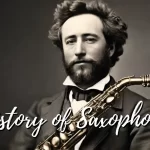Welcome to a melodious journey through the rich heritage of Indian classical music
where the soulful resonance of traditional instruments transcends time and captivates hearts. In this comprehensive guide, we’ll explore seven enchanting instruments that have played a pivotal role in shaping the cultural tapestry of India. Join us on this musical odyssey with GAPPU TV as we delve into the unique characteristics and histories of these timeless gems.
1. Tabla: The Rhythmic Heartbeat
The tabla, often referred to as the rhythmic heartbeat of Indian classical music, is a pair of hand-played drums that bring life and vigor to performances. With its intricate compositions and dynamic beats, the tabla is a cornerstone in both Hindustani and Carnatic classical traditions.
2. Sitar: The Epitome of Elegance
The sitar, a stringed instrument with a distinct resonating sound, is synonymous with the elegance and sophistication of Indian classical music. Its unique structure, featuring sympathetic strings and a resonant gourd, allows musicians to produce a vast array of emotions through its melodic expressions.
3. Flute: Conversations with the Divine
The bamboo flute, known as the bansuri, has a divine charm that transcends earthly realms. Its mellifluous notes, often associated with Lord Krishna, create a spiritual ambiance, making the flute a cherished instrument in classical performances and devotional music.
4. Sarod: A Symphony of Strings
The sarod, with its deep, resonant tones, is a fretless string instrument that commands attention with its intricate melodies. Originating from the Afghan rubab, the sarod has evolved into an instrument capable of expressing a wide range of emotions, from introspective serenity to exhilarating exuberance.
5. Veena: The Ancient Melody Weaver
The veena, one of the oldest classical instruments, is a symbol of divine harmony. With its majestic presence and intricate craftsmanship, the veena produces a mesmerizing range of tones. The Saraswati veena and the Rudra veena are prominent variations, each with its own unique characteristics.
6. Violin: Western Roots, Indian Soul
While the violin may have Western origins, its adaptation into Indian classical music has been seamless. Renowned artists have transformed this Western classical instrument into a conduit for expressing the depth and intricacies of Indian ragas, creating a beautiful fusion of musical traditions.
7. Dholak: The Pulse of Folk Rhythms
The dholak, a double-headed drum, embodies the rhythmic heartbeat of Indian folk music. Its vibrant beats and lively rhythms make it a quintessential accompaniment for folk dance and celebratory events, showcasing the diverse and colorful musical landscape of India.
Conclusion:
As we conclude our exploration of these seven remarkable instruments, we invite you to delve deeper into the enchanting world of Indian classical music. The diverse sounds and expressive qualities of these instruments not only reflect the cultural heritage of India but also serve as a testament to the timeless allure of classical music across the world. Stay tuned with GAPPU TV for more insightful journeys into the realm of music and culture.


